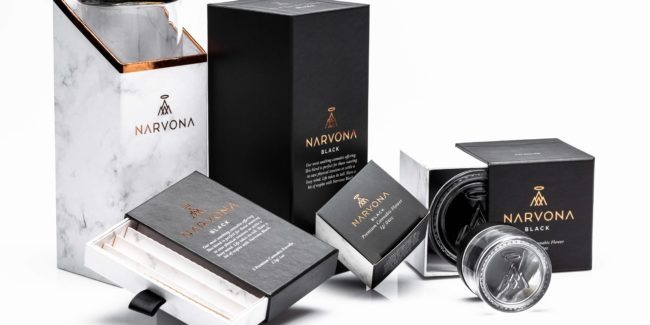With 420 just around the corner, for many, this presents a perfect opportunity to put their cannabis branding to work. However, even the best cannabis marketing companies can see diminishing returns if they don’t set up their display ad correctly. Here are five things that every display ad needs:
What is a Display Ad?
For those of you that don’t know what a display ad is, a display ad is advertising that shows up on websites, apps, and social media. Usually display ads appear in the form of a banner or a mix of image, text, and sometimes video. If you’ve ever seen an ad at the top, side, or bottom of a website; then you’ve seen a display advertisement.
Although there are some variations, in general, there are five types of display ads. Those types are as followed:
- Video – As the name implies, a video display ad is a simple video advertising products or services.
- Rich Media – This type of display ads involves the use of Flash files. These ads will react to interactions by the user, typically expanding when the user moves their mouse over the ad. Sometimes rich media ads will also act on their own, although most users will consider this annoying.
- Overlays – Similar to pop-up ads, overlays will appear over whatever content you’re trying to view without prompting from the user. These ads can be removed by clicking the close button. Sometimes advertisers like to make it difficult to close the ad, which most people hate.
- Interstitials – These types of advertisements will appear before the content you’re trying to view is displayed. A great example of using interstitial ads can be found on Forbes.com. More often than naught, Forbes will hit you with an interstitial ad before you’re able to view any articles.
- Sponsorship – Sponsorship ads include the use of a logo or the addition of branding to the design of a website. For example, if you visit a webpage telling you how to get stains out of white shirts and you see a logo for Tide in the corner of the page.
Now that you know what a display ad is, here’s how to get the most out of them.
Understand Your Target Audience
You would be surprised to find out how many cannabis marketing companies will launch vital ad-campaigns without asking the most fundamental question in advertising: Who is your target audience? Even if they do manage to answer that question, most still won’t actually take the time to understand their audience. If you want your display advertisement to be successful, you’re going to have to know your audience inside and out.
![]()
If you’ve done your research correctly, you should already have a pretty good idea of who your target audience is. If you don’t know who your audience is, then you’re going to have to do a little homework. For the most part, this means doing things like creating customer profiles or collecting customer data. In an age where consumers are particularly worried about how their data is collected and used, it usually pays to be upfront about what you’re doing.
The best way to find out more about your customers (or potential customers) without creeping them out is to send out an anonymous survey to the people that are on your email subscriber list. Start out by asking them basic questions like age, income, and gender; and then move on to more granular questions about their cannabis preferences. SurveyMonkey is a great online tool that can help you craft these polls, but do not be afraid to use another platform if it’s easier for you!
Clean Branding
Nothing will undermine your advertising efforts more than having messy branding. Branding may be more than just a slick logo and color scheme, but that doesn’t mean that visuals are not necessary! In fact, most customers will identify your brand by the visuals first before they look at any other part of the advertisement.
Bearing this in mind, it is absolutely critical that your display ad implements clean and concise branding. Make sure your company’s logo or symbol is clearly noticeable, but make sure that it’s not overshadowing the ad itself. Also, make sure that you’re keeping your branding consistent. Don’t just start changing your fonts or colors because you feel like it.
The best way to keep your branding clean, concise, and consistent is by implementing a style guide. Not only do style guides help you keep your brand consistent, but it also makes crafting advertisements easier because you already have a framework to work within. To learn more about style guides, check out this excellent write-up by HubSpot.
Call-to-Action
A call-to-action (CTA) is button or link that directs users to take a specific action; whether it’s to download something or to sign up for a service. Using a CTA can not only help you generate leads, but they can also help close a sale. A great example of a CTA can be found in everyone’s favorite online streaming service: Netflix.
It’s short, sweet, and to the point. Better yet, this call to action utilizes both persuasive language (“See What’s Next”), emphasizes its ease of use (“Watch Anywhere. Cancel Anytime”), and tempts you with a free trial. Here are a few quick tips to help you design a great and effective CTA.
Use Command Verbs – Netflix doesn’t humbly ask you to consider using their service, they tell you exactly what they want you to do. Likewise, you have to design your CTA using command verbs. Want your customer to download a report? Use the word “Download.” Want someone to use your cannabis e-commerce platform? Use the phrase “Shop now!” Don’t beat around the bush, let them know what you want.
Elicit an Emotional Response – Although using the phrase “Shop Now!” can be effective, you may also want to go a bit deeper and elicit an emotional response in your ad. For example, if you are advertising a medical cannabis dispensary, you might want to try a phrase like “Find Relief Today” or something similar. Take that basic message of what you’re communicating and dress it up with a little emotional language.
FOMO – One of the most powerful tools in cannabis marketers toolbelt is the “fear of missing out” or FOMO. People hate the idea that they’re missing out on an opportunity, which is why some of the most effective CTAs involve invoking FOMO. A simple way to get people interested in your CTA is to put a time limit on the offer and let your customers know that.
A Landing Page
It doesn’t matter how well crafted your display ad is, if you don’t have a landing page, it won’t matter. For those of you unfamiliar with the term, a landing page is a site that people go to when they click on your ad. A great landing page can take people that are somewhat interested in your product and turn them into paying customers.
One of the most important elements of the landing page is the headline. When visitors reach your landing page, the very first thing they’ll see is the headline. As silly as this may sound, it is at that moment that most people will decide whether or not to make a purchase. If you can’t grab them at the headline, it will only get harder from there.
When crafting a landing page for your display ad, makes sure that your offer aligns with your brand. Remember, you want to sell to your ideal customer. Make sure that every product or service you provide aligns closely with their needs. It’s okay to try and go for a broader audience, but make sure you’re not overextending yourself.
It is also important to remember to give your prospective customers all the information required for them to make an informed purchasing decision. Once again, think about your ideal customer and think of every kind of question they could ask you about your offering. Make sure that your landing page can answer every single one of those questions or you might lose out on a sale.
Clear Messaging
Every good display ad needs a clear message. If people look at your advertisement and don’t understand what it is, then you haven’t accomplished what you set out to do. That is not to say you can’t have a display ad that raises questions. If you do go that route, you need to make sure that they are asking the questions that you want them to.![]()
Just like branding, having a clear message requires consistency and clarity of purpose. You need to know what action you want your customers to take and you need to use consistent language to persuade them.
Aside from simply staying on message, you need to understand your target audience. Always remember that it’s not about what you want, it’s about what your customers want. When crafting your messaging, ask yourself what’s in it for them?



